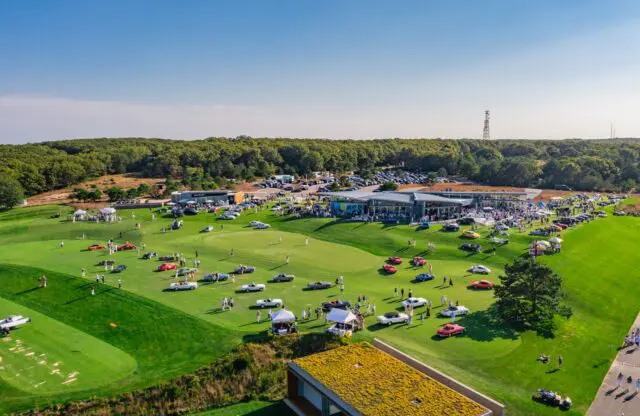“It’s like Pebble Beach, but without a broom up its arse.” That’s how Bob Rubin describes The Bridge, the concours he co-founded in 2016 and which marked its ninth year last weekend (September 13, 2025).
Rubin’s outspoken summation of this remarkable show belies the fact that it might just be the most rarefied event of its type on the planet – not least because it’s not possible to buy a ticket, and even invited guests must be chauffeured in from two miles away to deter gate-crashers.
“Last year a guy turned up at security dressed in overalls and announcing himself as ‘Louis with the tools to fix the cars’,” said one of the organising team.
“When we asked him what was in his bag, he said ‘er, tools’. When we took a look, it contained nothing but a set of clothes.” He had hoped to blag his way in, get changed and seamlessly blend with the legitimate guests.
And, if the latest edition of The Bridge was anything to go by, who could blame him?
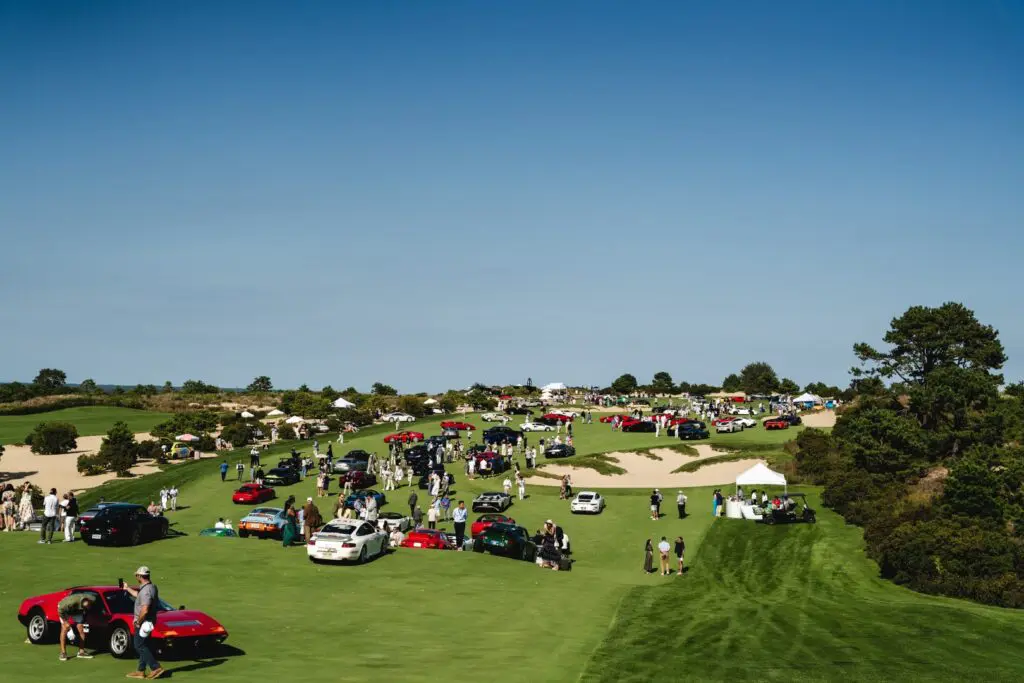
Staged on the pristine fairways of The Bridge golf course in the heart of New York’s up, up, upmarket Hamptons, it featured around 300 largely spectacular cars which Anthony Serra of automotive media and retail company 1600Veloce conservatively estimated to be worth around $600 million between them.
There was a good $30m worth alone at the clubhouse entrance in the form of a McLaren F1 and Gordon Murray’s own tribute to his most famous design, the GMA S1 LM that first broke cover at Pebble Beach in August.
Alongside those two were other automotive gems, such as BMW Art Car Number 20 and the Roger Penske Lola T70 MK3 B that Mark Donohue and Chuck Parsons raced to a 30-lap victory at Daytona in 1969.
And for anyone who liked Ferraris, The Bridge proved to be heaven with grass: there were no fewer than 53 on show – including a trio of F40s, an SP3 Daytona and the unique Fantuzzi-bodied car that starred alongside Terrence Stamp in the 1968 Federico Fellini movie Toby Dammit.
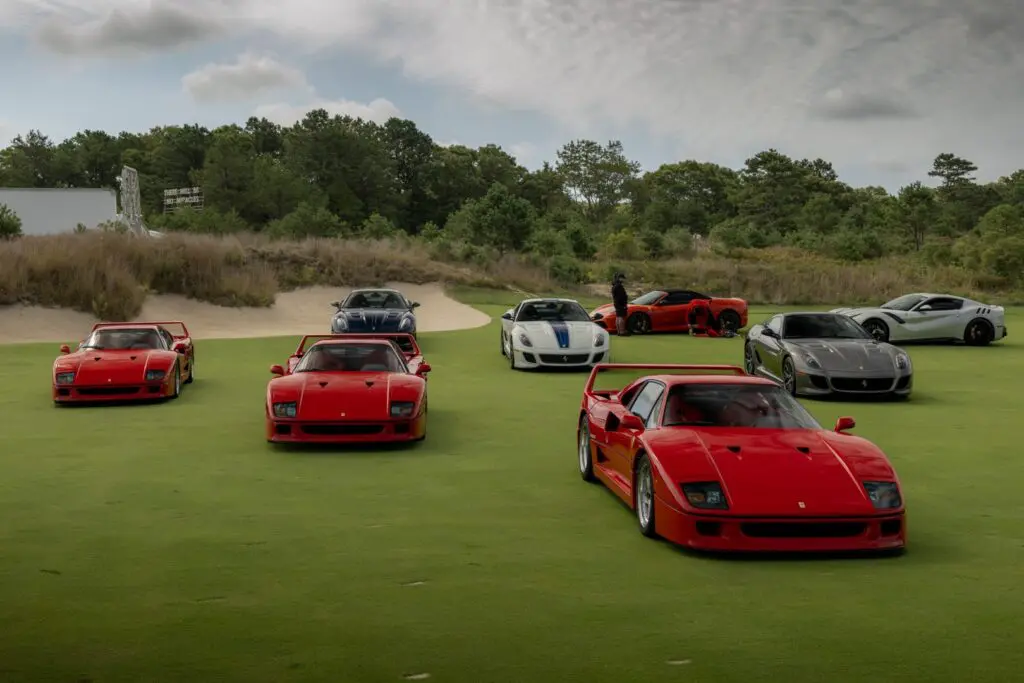
Porsche 911 fans were spoiled for choice, too. The 45 on display spanned every era and virtually every variation, ranging from multiple RUF-tuned versions to one with a 3.5-litre powerplant by Porsche race engine builder Andial, and a 1977 car painted by artist Richard Goncalves to give the impression that it had just rolled in from running La Carrera Panamericana.
Another artist, of-the-moment Daniel Arsham, showed his 1986 930A with hand-applied livery inspired by the 935 K3 Apple Porsche – but featuring the names of brands he’s collaborated with, including Dior and Rimowa.
Rumour had it, meanwhile, that another 911 belonged to comedian and Porsche nut Jerry Seinfeld, with the latest GT3 RS model being represented by half a dozen examples.
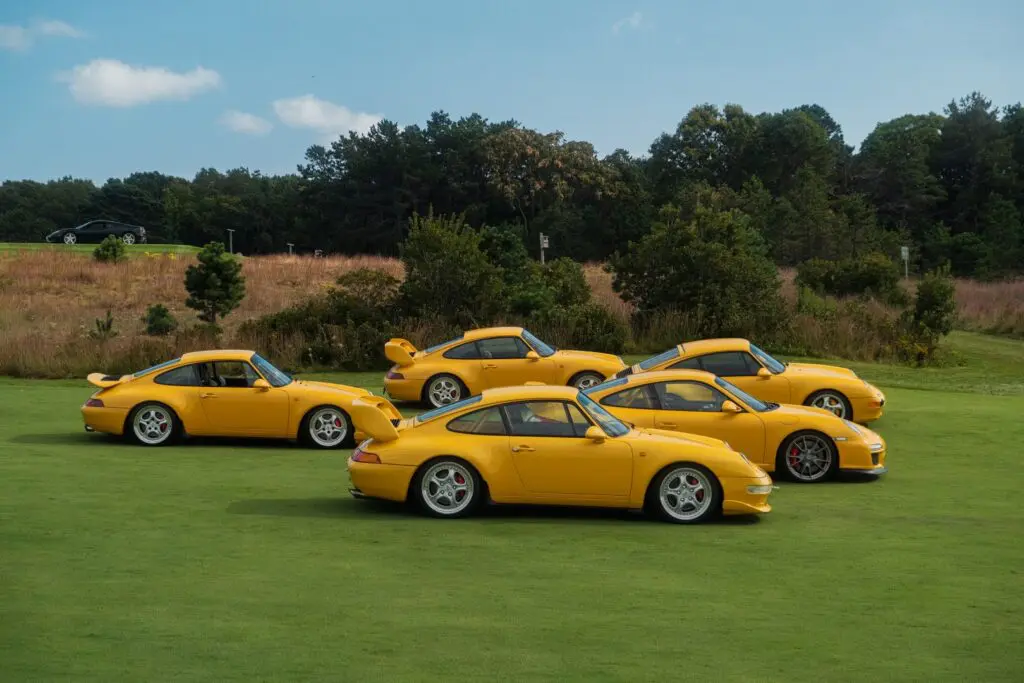
But The Bridge wasn’t all about Ferraris and Porsches – far from it. A brace of superbly well preserved 1950s Land Rovers and a Meyers Manx beach buggy graced some of the bunkers, with classic American muscle being parked nearby in the form of a screaming orange Pontiac GTO Judge (complete with ultra-rare, bonnet-mounted tacho), a stunningly well restored Ford Thunderbird in all-round vivid blue, and a 1965 Dodge Coronet A990 that proved to be one of 101 factory-built drag cars – which had covered just 843 miles when it was discovered in a Tennessee barn 15 years ago.
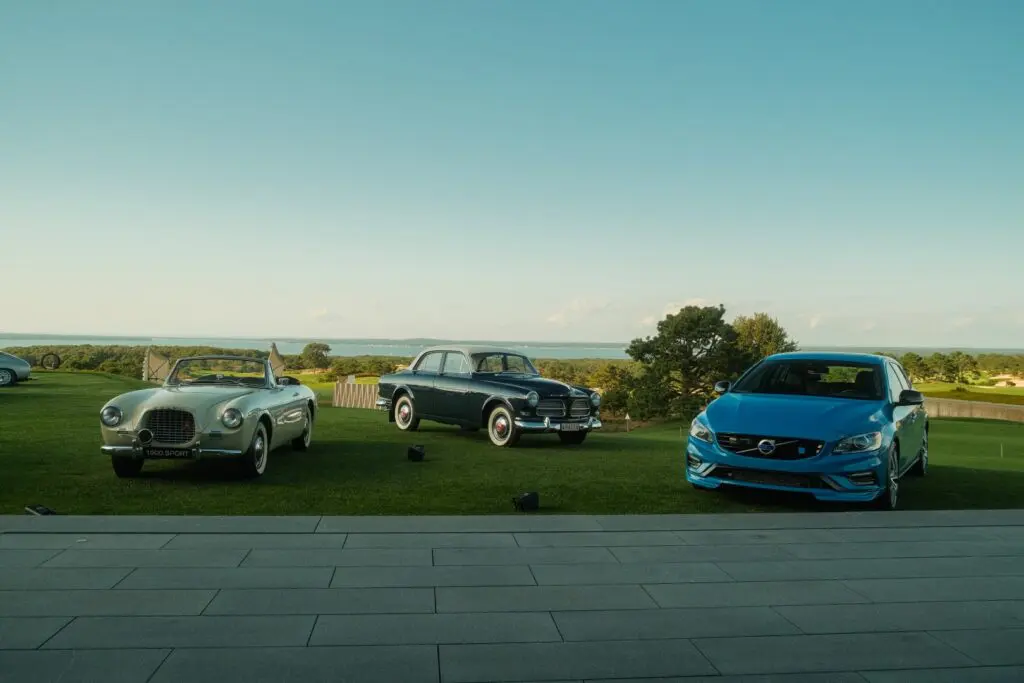
So, what is The Bridge? To enlarge on Rubin’s description, it’s designed to be an antidote to what have typically become overcrowded, over-serious, over-commercialised, over-political car events.
All of the 3000 or so people who ambled in and out of The Bridge were either guests of members of the golf club (joining fee: $1.2m) or invitees of the few, decidedly discreet sponsors which included Mercedes-Maybach, furniture maker Roche Bobois and luxury ‘mariner’s club’ Barton & Gray.
The cars are hand-picked by Rubin, Manhattan attorney and car expert Jeffrey Einhorn and The Bridge co-founder Shamin Abas, a PR guru and luxury events organiser.
“The Bridge is purely about beautiful cars being displayed in a beautiful setting – there are no judges no prizes, no politics, no tickets. It’s just an opportunity for people to get together to see and talk about the things they love without any of the usual commercial pressure,” says Einhorn.
And to ensure there are minimal distractions from the exhibits, printed descriptions of the cars are banned in favour of QR codes in the windscreens.
There isn’t a plinth, a stanchion or a tacky marketing banner in sight, while exquisite ‘finger food’ and drink are served throughout the day from small and discreet stands dotted around the show site – and all without charge, thus avoiding the vulgarity or ‘transactions’.
Founded in 2017, The Bridge also celebrates the automobile in a way that might not be obvious to anyone unfamiliar with this particular 550 acres of Long Island real estate – because it is the site of the former Bridgehampton race circuit.
Rubin, the son of a domestic appliances mechanic, has been car barmy since he was a kid growing up in New Jersey.
What must have been a decidedly successful career as a Wall Street currency and commodities trader soon enabled him to acquire his first Ferrari, a used 275 GTB (because he couldn’t afford what was then the latest model, a 308).
But soon Rubin was buying, and racing, some serious competition machinery including a Maserati Birdcage, a Bugatti Type 35 and the 1968 Alfa Romeo Tipo 33/2 Daytona that was famously repatriated to Europe after being abandoned in Angola during the civil war of 1975.
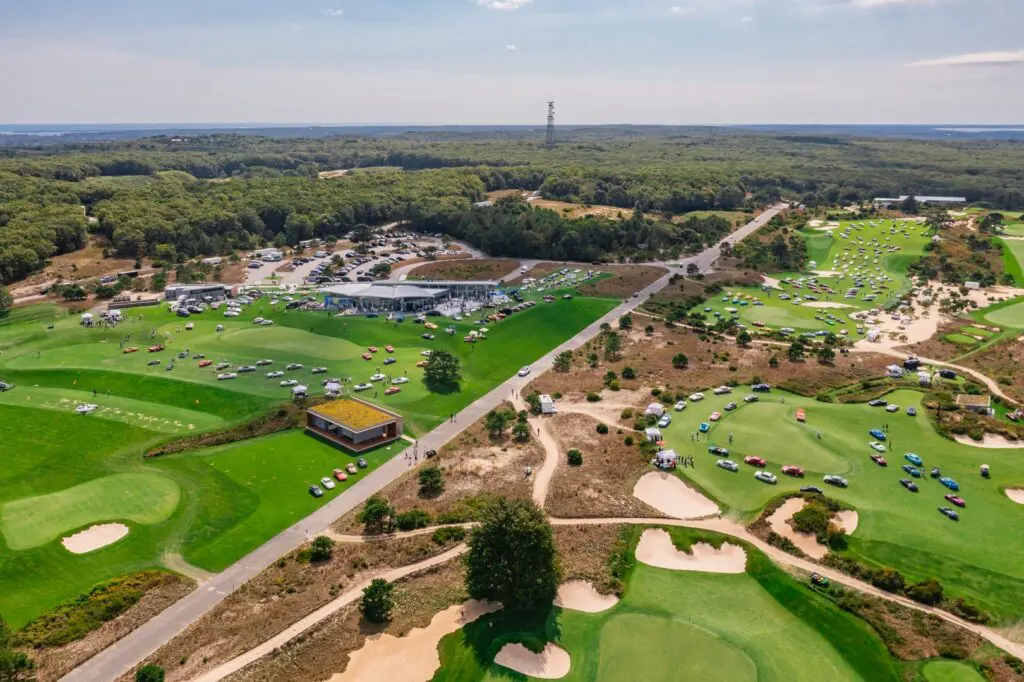
He also campaigned such cars as the ex-Phil Hill 250F Formula 1 Maserati, and the ex-King Leopold Bugatti Type 59 – which last changed hands five years ago for a sum just short of £10m.
Such was Rubin’s love for racing that in 1981 he acquired the run-down Bridgehampton circuit, which he operated until 1998 when local pressure led him to shut it down and convert what is now a hugely valuable piece of real estate into the golf course.
Rubin left Wall Street in 2000, shifting his focus to architecture (which, he says, he was brought to by his love of cars and their form), curating art exhibitions (Richard Prince and Arsham are personal friends) and, in 2006, buying and restoring the extraordinary ‘Maison de Verre’, a celebrated Parisian house built during the Art Deco period.
Back in 1991, meanwhile, Rubin donated his front-wheel-drive Miller 91 race car to the Smithsonian Institution and, in recent years, he has pared down his automobile collection to focus on movie scripts (which led him to write a book about the 1971 car chase classic Vanishing Point).
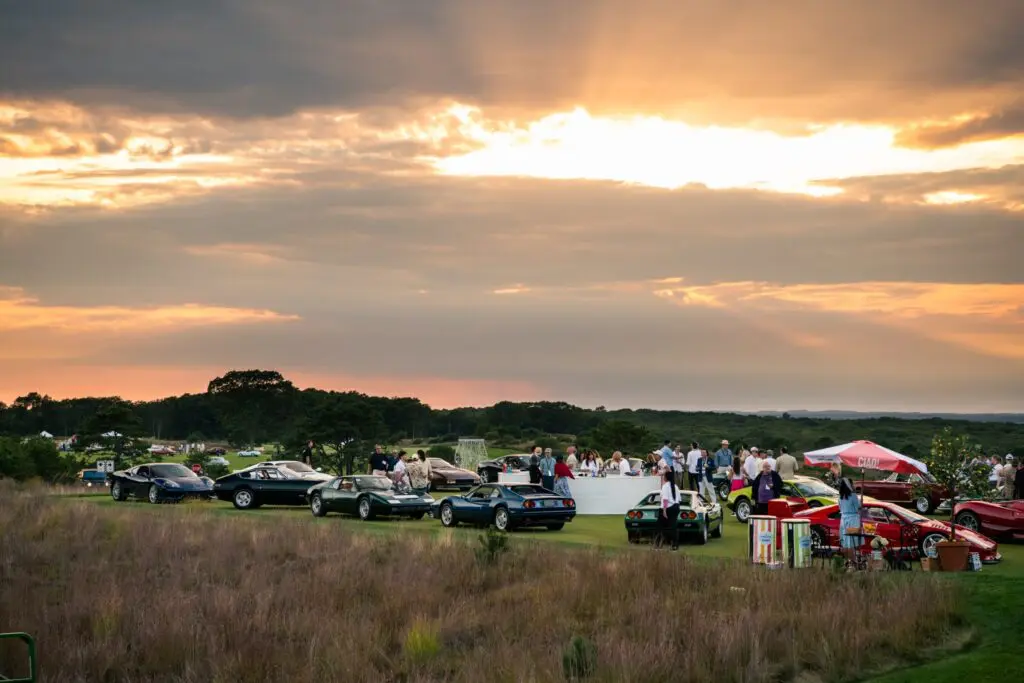
One car he’s not parted with, however, is the Ferrari 308 GTB that he eventually bought. It’s a rare ‘vetroresina’ (glassfibre) version, made all the rarer by the fact it’s finished in Blu Scuro.
It was on show at this year’s The Bridge, and will be there again next year, too. But if you want to see it, you’ll have to join the golf club, do some serious networking or get to know the man himself.
He’s such an affable character, he’ll probably invite you along….

